Professor ONO, Teruo and Research Group; “Reversing the Magnetic Vortex Core by Electrical Current” (18 Mar 07)
Professor ONO, Teruo and Research Group
Reversing the Magnetic Vortex Core by Electrical Current”
Published in Nature Materials (online express), 18 Mar 2007
Researchers at the Institute for Chemical Research have shown that the direction of the magnetic vortex core can be efficiently switched using electric currents with collaboration of University of Electro-communication, Osaka University and Univ. Paris-Sud. This work demonstrates the possibility of using the direction of the nanometre-scale core magnetization to store data in all-electrically controlled magnetic memory devices.
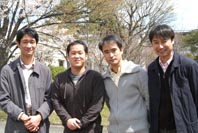
Research Team: Prof Ono, T;
Assoc Prof Kobayashi, K.;
Grad Student Yamada, K.;
Assist Prof Kasai, S.(from right side)
In a magnetic disk, the magnetization curls around the edges forming a so-called magnetic vortex. In the centre of the vortex – the core – the magnetization is forced to point either up or down with respect to the disk plane.Such states are therefore good candidates for the high-density storage of digital information with a “0” corresponding to “up” and a “1” to “down”, for example. However, before such memory cell devices can become a reality, scientists need to be able to find a way to electrically control the core magnetization. This would free us from using applied magnetic fields to control such devices so that we could simply use electric currents instead, which should be much easier.
Now, the team has shown that the direction of the core magnetization can indeed be switched electrically by using the current-driven resonant dynamics of the vortex (a three-dimensional movie of a micromagnetic simulation is available). The team obtained its results by detailed investigation of the dynamics of the magnetic vortex by micromagnetic simulations in the framework of the so-called Landau-Lifshitz-Gilbert equation with a “spin transfer” term. It also demonstrated the core switching in an experiment by using magnetic force microscopy (MFM).
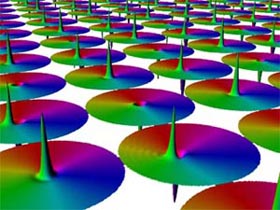
Fig. 1 Image of an MRAM array with magnetic disks.
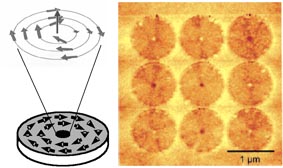
Fig. 2 Schematic illustration of a magnetic vortex (left) and MFM observation of vortex cores (right).
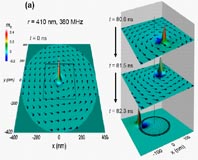
Fig. 3 Current-driven resonant excitation of the magnetic vortex.
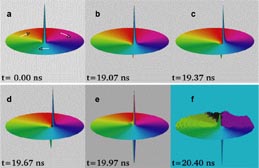
Fig. 4 Perspective view of the magnetization with a moving vortex structure.

Fig. 5 MFM observation of electrical switching of the vortex core.
 Institute for Chemical Research, Kyoto University
Institute for Chemical Research, Kyoto University International Joint Usage Research Center
International Joint Usage Research Center